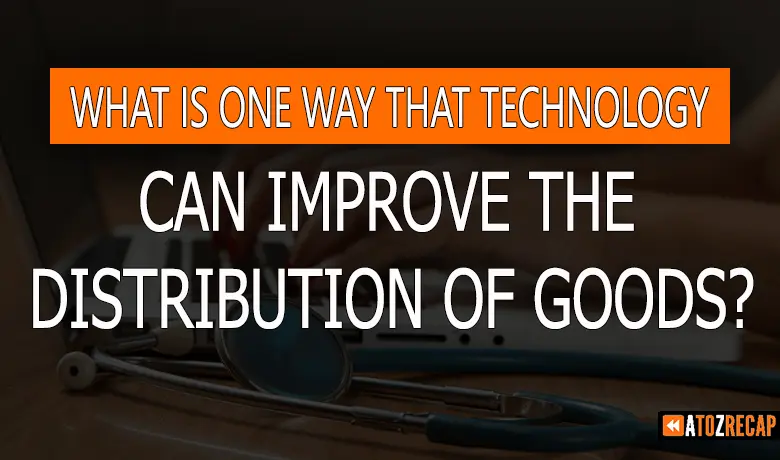What is One Way that Technology Can Improve the Distribution of Goods?
Let’s get into it: What is One Way that Technology Can Improve the Distribution of Goods?
In today’s fast-paced global economy, efficient distribution of goods is crucial for businesses to stay competitive and meet customer demands. Technological advancements have revolutionized the way goods are distributed, offering innovative solutions to streamline processes and enhance overall efficiency. One of the most impactful technologies in this realm is real-time tracking systems, which provide businesses with unprecedented visibility and control over their supply chains.
Combination of Technologies
Real-time tracking systems leverage a combination of technologies such as GPS (Global Positioning System), RFID (Radio-Frequency Identification), and IoT (Internet of Things) sensors to monitor the movement of goods throughout the entire distribution process. These systems offer a plethora of benefits that can significantly improve the distribution of goods across various industries.
First and foremost, real-time tracking systems provide businesses with invaluable visibility into their supply chains. By accurately tracking the location and status of shipments in real-time, companies can identify potential bottlenecks or delays and take proactive measures to address them promptly. This level of transparency enables businesses to optimize their distribution networks, allocate resources more effectively, and ensure timely delivery of goods to customers.

Enhance Inventory Management
Moreover, real-time tracking systems enhance inventory management capabilities. By continuously monitoring inventory levels and locations, businesses can avoid stockouts and overstock situations, leading to better inventory turnover and reduced carrying costs. Additionally, real-time tracking enables companies to implement just-in-time inventory practices, where goods are replenished precisely when needed, minimizing excess inventory and maximizing warehouse space utilization.
Furthermore, real-time tracking systems enable more efficient route planning and fleet management. By analyzing real-time data on vehicle locations, traffic conditions, and delivery schedules, businesses can optimize delivery routes to minimize transit times, fuel consumption, and vehicle wear and tear. This not only reduces operating costs but also enhances overall fleet productivity and performance.
In addition to improving operational efficiency, real-time tracking systems enhance customer satisfaction. By providing customers with accurate and up-to-date information on the status of their orders, businesses can enhance transparency and build trust. Customers can track their shipments in real time, receive timely updates on delivery schedules, and even reroute packages if needed, leading to a more seamless and satisfying shopping experience.
Furthermore, real-time tracking systems play a vital role in supply chain resilience and risk management. By quickly identifying and mitigating potential disruptions such as weather events, traffic accidents, or supply chain disruptions, businesses can minimize the impact on operations and maintain continuity in goods distribution. This proactive approach to risk management is essential for ensuring business continuity and safeguarding against unforeseen disruptions.
Final Thoughts
In conclusion, real-time tracking systems represent a powerful tool for enhancing the distribution of goods in today’s interconnected world. By providing businesses with unprecedented visibility, control, and flexibility, these systems enable companies to optimize their supply chains, improve operational efficiency, and enhance customer satisfaction. As technology continues to evolve, real-time tracking systems will undoubtedly play an increasingly critical role in shaping the future of goods distribution across industries.
Also Read: How to Become a Lash Tech in Georgia?







